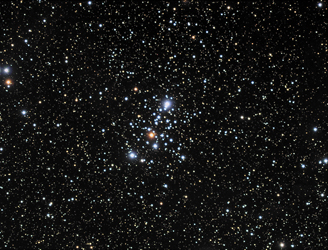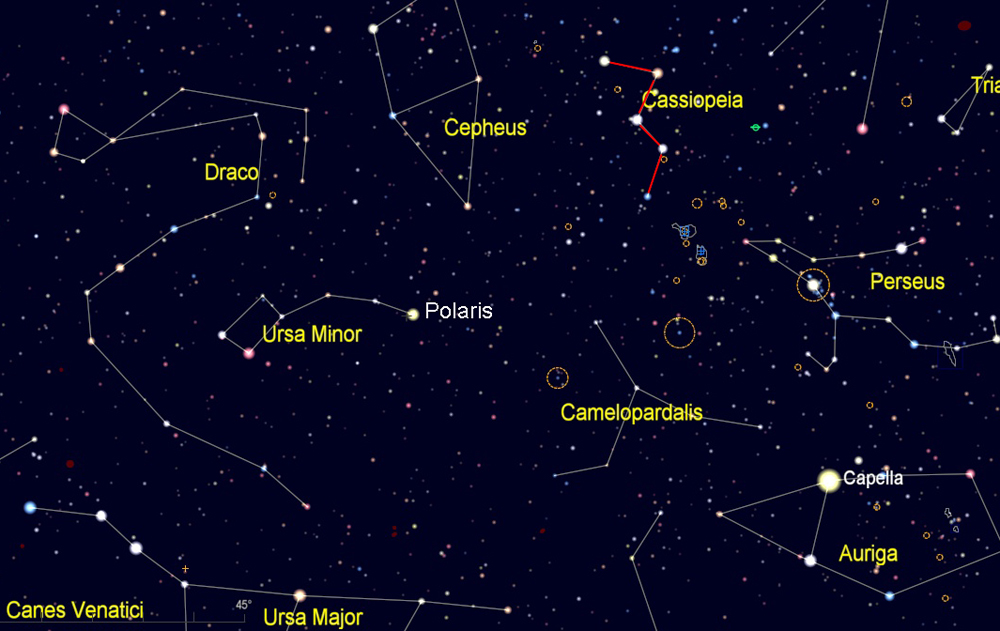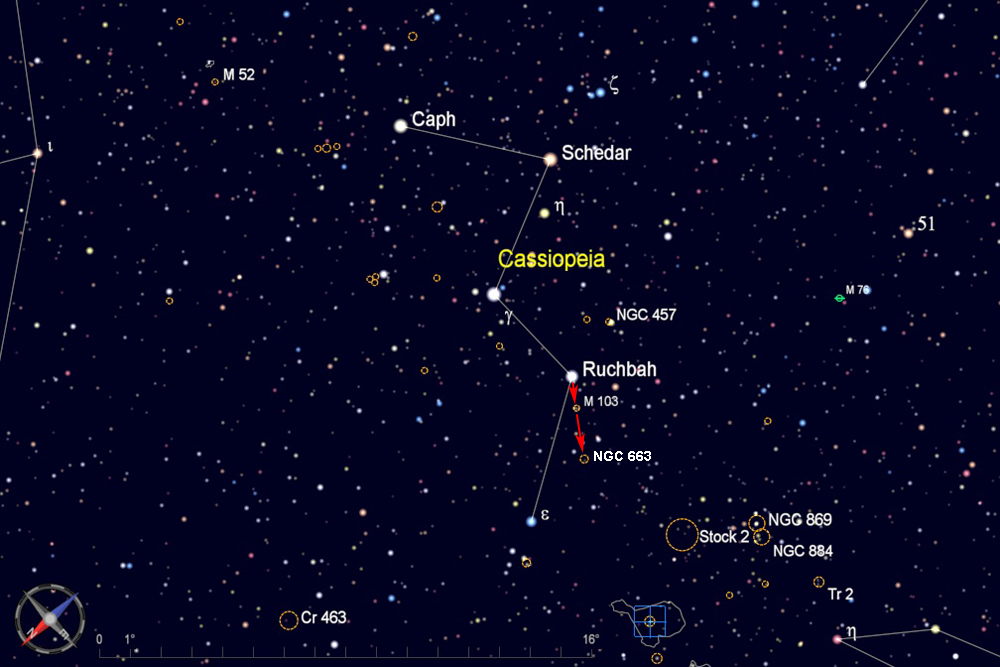Messier 103 is a small but distinct open cluster, just 5 arcminutes wide. Only a few stars may be visible through large binoculars or a small telescope. More are visible through a larger telescope, where the cluster assumes a triangular shape. Just about 1.5 degrees to the northeast is NGC 663, a larger open cluster with more stars that is also known as Caldwell 10. The distances of these two clusters are estimated to be 7200 and 7800 light years, respectively. This region of Cassiopeia contains many other star clusters that are worth exploring. Several of them are marked by the yellow circles in the charts below.
|
 |
| Evening visibility: |
August-March |
| Best viewed with: |
telescope |
| |
Printable chart (pdf) |
View larger image |
Directions:
Find the constellation Cassiopeia, which has a distinctive "W" shape (although its orientation changes at different times of year as it circles the north celestial pole). On fall evenings, look for Cassiopeia in the northeast, where its tilt makes it look like a "3", and in the winter look high in the north above Polaris, where it is oriented like an "M". |
 |
Once you have located Cassiopeia, begin at Ruchbah, the star that forms the first angle of the W shape. Move 1 degree back toward the first star of the W shape, but just a little off the line between the two stars, as shown in the chart below, to reach M103. Once you have observed this small cluster, you can move in the same direction another 1.5 degrees to reach NGC 663. |
 |
| Star charts created with Cartes du Ciel |
| |
| |


